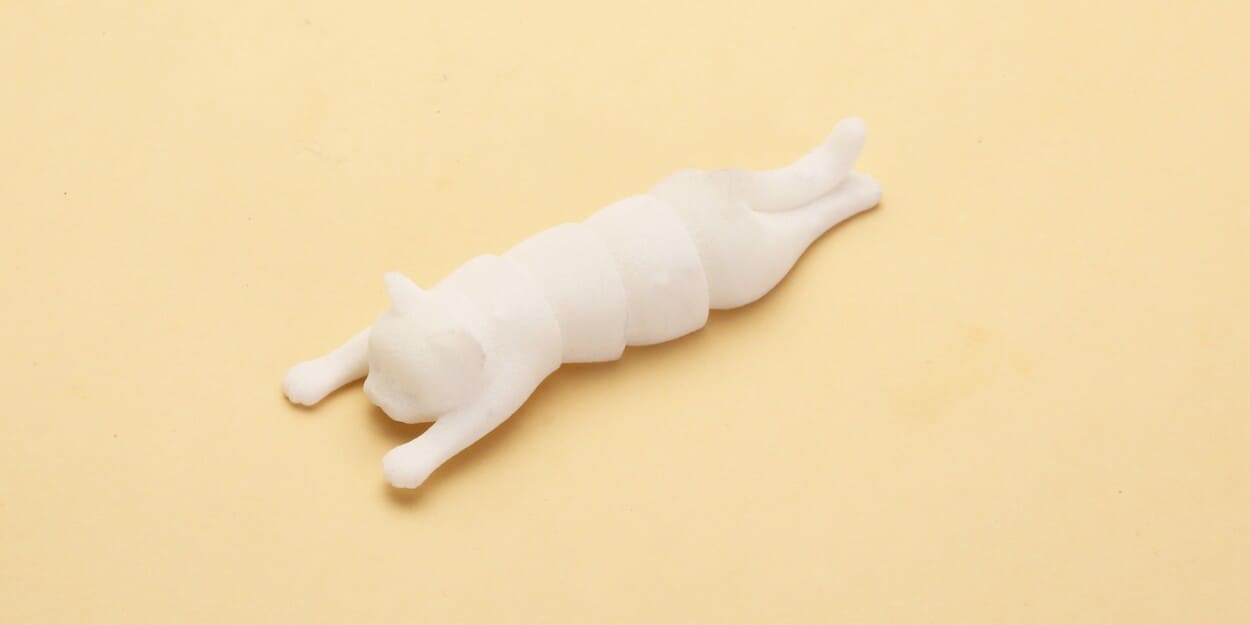Understanding Flexible 3D Printing
When we talk about “flexible” in 3D printing, we’re referring to materials that bend, stretch, or compress without breaking. Unlike rigid plastics such as PLA or ABS, flexible materials mimic the properties of rubber or soft polymers.
Key mechanical properties to consider include:
1. Shore hardness: A scale that measures softness or hardness. Lower values mean softer, more rubber-like materials.
2. Elongation at break: How much a material can stretch before snapping.
3. Tear resistance: The ability to withstand repeated bending or pulling.
4. Compression set: How well a material returns to its original shape after being squeezed.
Flexible 3D printing is widely used in:
1. Consumer goods: phone cases, footwear, grips.
2. Healthcare: prosthetics, orthotics, dental models.
3. Industrial applications: seals, gaskets, vibration dampers.
Understanding these fundamentals helps you match the right material and process to your application.
Common Flexible 3D Printing Materials
1. TPU (Thermoplastic Polyurethane)
• Pros: Excellent durability, abrasion resistance, and elasticity. Easy to source.
• Cons: Can be tricky to print on Bowden-style extruders due to filament softness.
• Best for: Prototypes, footwear, protective cases, and industrial parts.
2. TPE (Thermoplastic Elastomer)
• Pros: Very soft, rubber-like feel. Great for grips and cushioning.
• Cons: More difficult to print than TPU; prone to stringing.
• Best for: Handles, seals, vibration-dampening parts.
3. Flexible Resins (SLA/DLP)
• Pros: High detail, smooth surface finish, excellent for prototypes.
• Cons: Limited durability compared to thermoplastics; can degrade under stress.
• Best for: Medical models, design prototypes, and small intricate parts.
3D Printing Processes for Flexible Parts
1. FDM/FFF (Fused Deposition Modeling)
• How it works: Extrudes thermoplastic filament layer by layer.
• Pros: Affordable, accessible, wide material availability (TPU, TPE).
• Cons: Requires tuning for flexible filaments (slower speeds, direct-drive extruders).
• Best for: Prototyping, consumer goods, small-batch production.
2. SLA/DLP (Stereolithography / Digital Light Processing)
• How it works: Uses light to cure liquid resin.
• Pros: High resolution, smooth finish, excellent for detailed prototypes.
• Cons: Flexible resins are less durable; limited mechanical performance.
• Best for: Medical models, design validation, intricate parts.
3. SLS (Selective Laser Sintering)
• How it works: Fuses nylon powder with a laser.
• Pros: Strong, isotropic parts, no support structures needed.
• Cons: Higher cost, requires industrial equipment.
• Best for: Functional end-use parts, automotive, aerospace.
4. MJF (Multi Jet Fusion)
• How it works: Uses fusing agents and heat to solidify powder layers.
• Pros: Faster than SLS, excellent surface quality, strong mechanical properties.
• Cons: Industrial-level investment.
• Best for: Production runs, functional prototypes, flexible nylon parts.
Tips to Choose Which Types of Flexible 3D Printing
1. Application requirements: Does the part need to bend frequently (e.g., a hinge) or just absorb impact (e.g., bumper)?
2. Design complexity: SLA/DLP excels at fine details, while FDM is better for simple geometries.
3. Production scale: For one-off prototypes, FDM or SLA is cost-effective. For batch production, SLS or MJF is more efficient.
4. Budget: FDM is the most affordable; SLS/MJF are premium but deliver industrial-grade results.
5. Post-processing needs: Consider whether the part requires coloring, smoothing, or sterilization.
Hi3DP Delivers FDM, SLS, and MJF Printed Flexible Parts
At Hi3DP, we specialize in delivering high-quality flexible parts across multiple processes:
1. FDM flexible parts: Cost-effective TPU prints for rapid prototyping and consumer products.
2. SLS flexible parts: Durable TPU components for prototypes and industrial applications.
3. MJF flexible parts: High-speed production of isotropic, functional TPU parts.
By offering all three technologies, Hi3DP ensures you can match the right process to your project’s needs, whether you’re testing a prototype or scaling to production.
FAQs
Q: Which flexible material is easiest to print?
A: TPU is generally the easiest flexible filament for FDM printers, especially with a direct-drive extruder.
Q: Can flexible resins replace TPU or TPE?
A: Not entirely. Flexible resins are great for prototypes and models, but lack the durability of thermoplastic elastomers.
Q: Are flexible 3D printed parts suitable for end-use applications?
A: Yes, especially with SLS and MJF. Many industries use them for seals, gaskets, and functional components.
Q: Can flexible 3D printed parts withstand outdoor use?
A: Yes, but it depends on the material. TPU and nylon-based powders (SLS/MJF) generally perform better outdoors due to higher UV and abrasion resistance. Flexible resins, however, may degrade faster under sunlight.
Q: Are flexible materials food-safe?
A: Most flexible filaments and resins are not inherently food-safe unless specifically certified. Even then, post-processing and printer contamination can affect safety. For food-contact applications, always check manufacturer certifications.
Q: What design considerations are important for flexible parts?
A: Avoid sharp corners (stress concentrators); use fillets and rounded edges; adjust wall thickness for desired flexibility; consider infill patterns, such as gyroid or honeycomb can enhance elasticity.
Q: How do flexible 3D printed parts compare to injection-molded rubber?
A: 3D printed flexible parts are excellent for prototyping and low-volume production but may not match the consistency, surface finish, or long-term durability of injection-molded rubber. However, they offer faster turnaround and design freedom.
Q: How do I choose between TPU and TPE?
A: Choose TPU if you need durability and abrasion resistance; choose TPE if you need maximum softness and elasticity.














